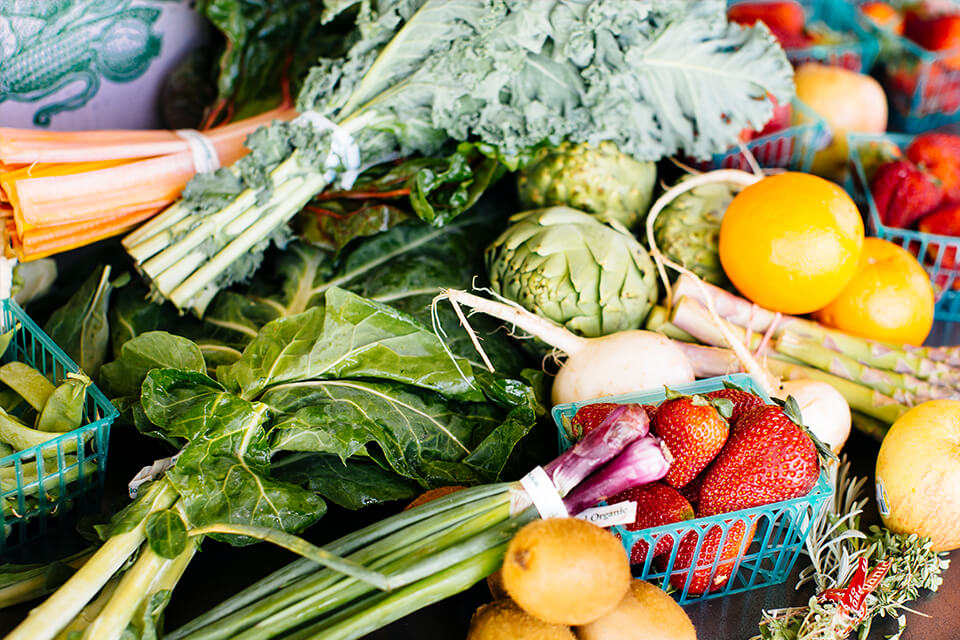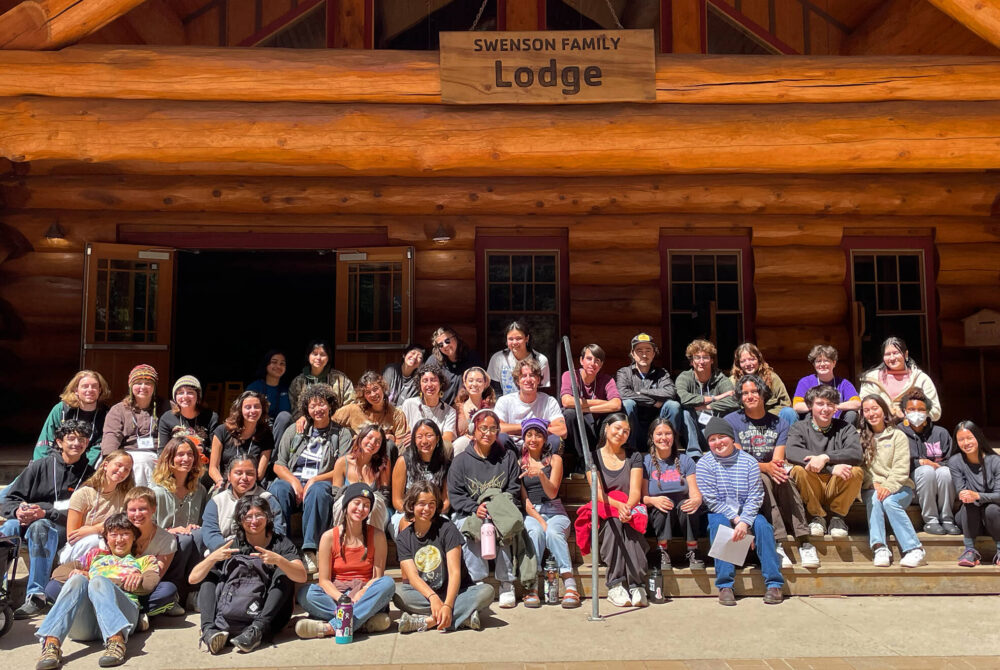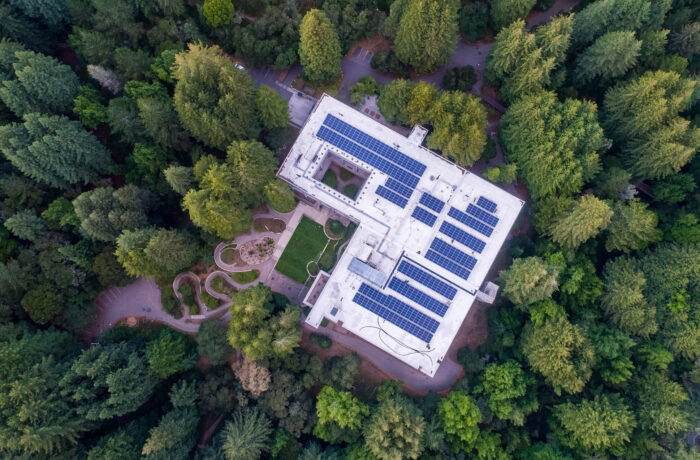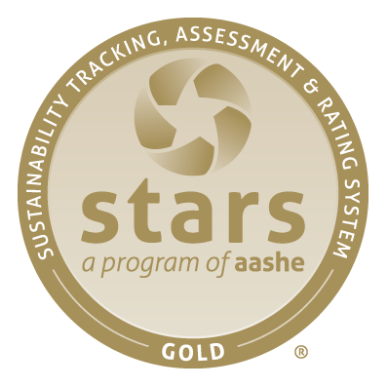In 2022, UCSC launched a campuswide strategic planning process, Leading the Change. One of the plan’s five pillars — Climate Change, Sustainability and Resilience — centers sustainability as a core University value for years to come.
A key goal is to decarbonize UCSC to create an equitable, accessible and fossil-free future, and Chancellor Cynthia Larive charged a decarbonization and electrification task force to assess the feasibility of reducing fossil fuel use by 95%, potentially as soon as 2030. Simultaneously, the campus launched a major project to reduce natural gas in the campus’s central heating hot water system and advanced design work for a microgrid at Westside Research Park as a living lab.
Read More about Sustainability at UC Santa Cruz
Santa Cruz and Monterey counties were impacted severely by the rainiest winter in decades along the California central coast, including a major levee breach in the neighboring Pajaro Valley area. While the community awaited a presidential disaster declaration, UCSC stepped up, donating several cases of to-go boxes and fresh produce for Pajaro evacuees. UCSC has increased collaborations with numerous local community organizations and nonprofits, including Regeneración, which also participated in The Humanities Insitute’s Deep Read event.
UCSC received a $20 million National Science Foundation grant for an Equitable Nature-based Solutions Hub to assess climate risks and identify where coral reefs and mangroves can best protect underserved coastal communities. Additionally, the Center for Agroecology notably earned the Agricultural Experiment Station designation and will support a new USDA regional food business center.

CLIMATE PROTECTION – EMISSIONS
* Interim goals for 2030, 2035 and 2040 to be developed through fossil-free planning that is underway at each location
** 90% direct reduction of total emissions from 2019 levels with residual emissions negated by carbon removal
UC Santa Cruz’s emissions increased significantly as the campus rebounded from low levels during the pandemic. Commute emissions decreased 18% from pre-pandemic levels while air travel increased 24% compared with 2019 travel emissions.
ENERGY – RENEWABLE energy use
ENERGY USE INTENSITY (EUI)
UC Santa Cruz saw an increase in its EUI in 2022.
FOOD

of food and beverage purchases met sustainability criteria ($2.7M)
of food and beverage purchases were plant-based ($2.2M)
Of the food purchased for campus dining, 21% was sustainably sourced and 18% was plant-based. While this was down from last year due to supply chain issues and insufficient data to determine Real Food qualifications for some products, UC Santa Cruz is on track to meet the goal for 25% of its food to be sustainability sourced by 2030. Additionally, UCSC’s Center for Agroecology grew 20,400 pounds of food that went to support students through the campus’s Basic Needs program.
Green building
UC Santa Cruz received one Interior Design and Construction LEED Gold certification this year, for the Crown College Residential Hall.
8 Gold, 7 Silver and 2 Certified
Total number of LEED certifications
procurement

green spend on electronics (38%)

green spend on cleaning supplies (85%)

green spend on indoor office furniture (99%)

green spend on office supplies (77%)
The University reports on green spend, as defined in the Sustainable Procurement Guidelines, and reached out to suppliers for spend data in four product categories for this year’s report.
Green spend is defined as meeting preferred or minimum criteria in UC’s Sustainable Procurement Guidelines.
Suppliers reporting: Electronics (7), Furniture (3), Cleaning supplies (3), Office supplies (3).
UC Systemwide Spend Analytics category data provided by CalUSource.
Sustainable Building & Laboratory Operations
The Green Labs team reached its goal this year of 25% of UC Santa Cruz labs being certified.
total assessed green laboratories
Transportation
of students and employees are utilizing alternative commuting methods
EV charging ports
of all vehicles acquired in 2023 were electric (zero-emission), plug-in hybrid or clean transportation fuel
Of purchased vehicles, 21% were zero emission or plug-in hybrid electric. UC Santa Cruz will focus on improving fleet electric vehicle charging infrastructure next year.
WATER
*Based on a 3-year average of fiscal years 2005-08
**2025 goal is a 36% reduction from baseline
UC Santa Cruz continues its exceptional performance in water conservation with a 51% reduction from baseline.
ZERO WASTE – GENERATion
*These numbers might include a small amount of incineration that is being phased out.
**In 2021, waste generation per weighted campus user spiked due to pandemic-related closures as base-level operations continued but the number of users on campus decreased.
UC Santa Cruz reduced its per day waste generated per weighted campus user by 19% compared with a baseline of fiscal year 2015–16. This decrease is the smallest of the past three years since COVID restrictions have eased and more activity is occurring on campus. Compared with the last non-pandemic year, fiscal year 2018–19, UC Santa Cruz dropped its total waste generation by 6%.
ZERO WASTE – DIVERsion
*Waste incineration was counted as diversion prior to July 2022.
UC Santa Cruz increased its diversion rate to 49% from 46% in the previous year. The work of the campus’s Zero Waste Action Committee to increase the availability of compost bins on campus is a big driver of this increase. As more infrastructure and education efforts are undertaken by the committee in the coming year, UC Santa Cruz’s diversion rate should continue to rise.
Awards
UCSC continues to maintain its Association for the Advancement of Sustainability in Higher Education Sustainability Tracking, Assessment and Rating System Gold rating, and also received several notable recognitions this year, including the Seal of Excelencia from Excelencia in Education for its robust work as a Hispanic Serving Institution.
A full list of awards is featured on the UC Office of the President’s website.
 Sustainability Annual Report 2023
Sustainability Annual Report 2023


